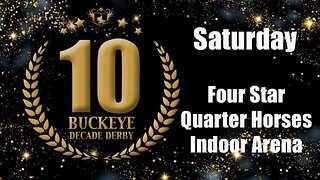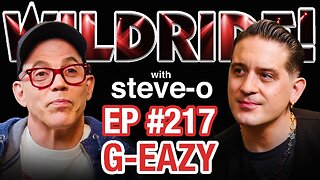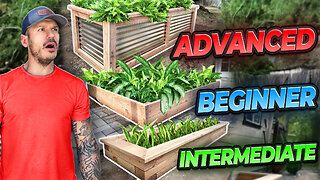Selected solar system
The solar system is the gravitationally bound system of the Sun and the objects that orbit it. The largest of such objects are the eight planets, in order from the Sun: Mercury, Venus, Earth, Mars, Jupiter, Saturn, Uranus, and Neptune. The terrestrial planets have a definite surface and are mostly made of rock and metal. The gas giants are mostly made of hydrogen and helium, while the ice giants are mostly made of 'volatile' substances such as water, ammonia, and methane.
The solar system was formed 4.6 billion years ago from the gravitational collapse of a giant interstellar molecular cloud. Over time, the cloud formed the Sun and a protoplanetary disk that gradually coalesced to form planets and other objects. That is the reason why all eight planets have an orbit that lies near the same plane. In the present day, 99.86% of the Solar System's mass is in the Sun and most of the remaining mass is contained in the planet Jupiter. Six planets, the six largest possible dwarf planets and many other bodies have natural satellites or moons orbiting around them.
Here are the eight planets of the solar system, in order from the Sun:
Mercury: The smallest and closest planet to the Sun. It has no moons and a very thin atmosphere.
Mercury planetOpens in a new window
en.wikipedia.org
Mercury planet
Venus: The hottest planet in the solar system. It has a thick atmosphere of carbon dioxide and sulfuric acid.
Venus planetOpens in a new window
www.space.com
Venus planet
Earth: The only planet known to support life. It has a thin atmosphere of nitrogen and oxygen, and a large variety of life forms.
Earth planetOpens in a new window
en.wikipedia.org
Earth planet
Mars: The fourth planet from the Sun. It has a thin atmosphere and no liquid water on the surface.
Mars planetOpens in a new window
www.space.com
Mars planet
Jupiter: The largest planet in the solar system. It is a gas giant with a thick atmosphere of hydrogen and helium.
Jupiter planetOpens in a new window
www.britannica.com
Jupiter planet
Saturn: The second largest planet in the solar system. It is a gas giant with a thick atmosphere of hydrogen and helium, and a system of rings made of ice and dust.
Saturn planetOpens in a new window
en.wikipedia.org
Saturn planet
Uranus: The seventh planet from the Sun. It is an ice giant with a thick atmosphere of hydrogen and helium, and a system of rings made of ice and dust.
Uranus planetOpens in a new window
en.wikipedia.org
Uranus planet
Neptune: The eighth and farthest planet from the Sun. It is an ice giant with a thick atmosphere of hydrogen and helium, and a system of rings made of ice and dust.
Neptune planetOpens in a new window
www.reuters.com
Neptune planet
In addition to the planets, there are many other objects in the solar system, including:
Dwarf planets: These are objects that are smaller than planets but larger than asteroids. Pluto is the most famous dwarf planet.
Pluto planetOpens in a new window
en.wikipedia.org
Pluto planet
Asteroids: These are small rocky bodies that orbit the Sun. They are mostly found in the asteroid belt, between the orbits of Mars and Jupiter.
Asteroid planetOpens in a new window
www.suse.com
Asteroid planet
Comets: These are icy bodies that orbit the Sun. When they get close to the Sun, they heat up and release a tail of gas and dust.
Comet planetOpens in a new window
www.nbcnews.com
Comet planet
Meteoroids: These are small pieces of rock or metal that orbit the Sun. They can sometimes enter Earth's atmosphere and burn up as a shooting star.
Meteoroid planetOpens in a new window
sciencenotes.org
Meteoroid planet
The solar system is a vast and complex place, and we are still learning about it. There are many mysteries that remain to be solved, such as the origin of life and the possibility of other habitable planets.
Sources
en.wikipedia.org/wiki/Solar_System#:~:text=The%20Solar%20System%20is%20the,water%2C%20ammonia%2C%20and%20methane.
Search related topics
Enter a prompt here
Bard may display inaccurate or offensive information that doesn't represent Google's view
-
 1:06:35
1:06:35
Patriots With Grit
4 hours agoSpeaking Up, Pushing Back | Daniel McGirr
15.2K4 -
 56:19
56:19
Total Horse Channel
2 days ago2024 Buckeye Reining Series | Saturday Night | 7:30 pm EST
11.4K1 -
 1:15:38
1:15:38
Steve-O's Wild Ride! Podcast
2 days ago $0.22 earnedG Eazy Opens Up About Falling Off - Wild Ride #217
15.8K11 -
 18:44
18:44
We Profit with Stock Curry
6 days agoUltimate Advice for Teens & Young Adults
21.1K12 -
 LIVE
LIVE
Lofi Girl
1 year agoSynthwave Radio 🌌 - beats to chill/game to
259 watching -
 21:00
21:00
Mr. Build It
23 days ago3 Ways to Build Garden Beds
25.9K14 -
 1:42:14
1:42:14
Jewels Jones Live
1 day agoDETRANS w/ special guest Mary Margaret Olohan | A Political Rendezvous - Ep. 78
33.7K20 -
 1:36:46
1:36:46
Roseanne Barr
1 day ago $73.82 earnedFor Love of Country with Tulsi Gabbard | The Roseanne Barr Podcast #50
149K421 -
![[D2] Rumble Featured!! Lets Go!!! #RumbleTakeOver](https://hugh.cdn.rumble.cloud/s/fw/s8/1/5/g/l/6/5gl6r.0kob-small-D2-Onslaught-Grind-w-Some-P.jpg) 6:28:15
6:28:15
CHiLi XDD
12 hours ago[D2] Rumble Featured!! Lets Go!!! #RumbleTakeOver
45.8K7 -
 2:45
2:45
Chicks in the Office
10 hours agoHolly Madison Talks Reconciliation with Kendra Wilkinson
59.6K37